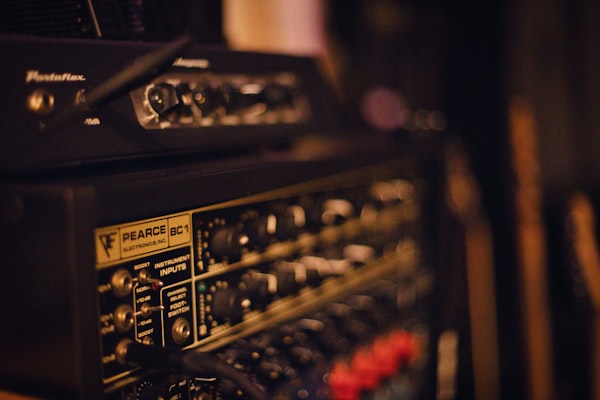If you’re relatively new to music production, it can often be quite hard to get to grips with the sheer amount of information there is to learn, as well as the complexity of some of the equipment and the various instruments.
However, if you want to be successful in music production, it is vital that you know this information. This article discusses what a phaser is, how it creates its sound, as well as comparing it to its closest relative, the flanger.
The phaser’s popularity in music production waivers somewhat, but there is absolutely no denying that it is an amazing piece of technology, and actually has a lot more potential in music production than a lot of people actually realize.
In fact, the phaser is the tool behind all of those super interesting wobbles and gorgeous swooshes that you’ll hear from time to time.
So, if you want to learn what a phaser is, what it does, and how it is related to the flanger, then all you need to do is read on through this article, where we’ll explain everything you need to know about phasers!
Notable Phaser Uses
As we mentioned, the popularity of phasers does tend to wane from time to time, however, they have a deep rooted history in music, and have played a massive role in so many careers of various music artists.
Some of its most prominent use came throughout the 1960s with the creation of many psychedelic rock records, with notable artists such as Jimi Hendrix and Robin Trower making the phaser effect extremely popular at the time.
It was only in the 1970s did it become a portable guitar effect however!
The phaser is still used quite frequently today, however, its primary use has changed slightly!
From the psychedelic records of the ‘60s, the phaser is now most commonly used by musicians in the production of music for motion pictures and television production.
The main use of phasers in television production may surprises you, and that’s because it is used to turn the regular sound of a human voice into that of a robot!
This is because the filtering of the frequency is able to create a sound that closely mimics a sound from a mechanical source, which is why it has become such a common technique
Starting With Flanging
Before taking a look at phasing, it’s perhaps a good idea to look at flanging first, as they’re actually very closely related!
However, whilst it’s true that both flangers and phasers do indeed have some tonal similarities and they both employ rather similar architectures, the technology that lies underneath them both is actually considerably different.
Both flangers and phasers make use of a signal path that splits the input signal feed into a processing path, the output from this path is then recombined back with the original signal which will then create the new, effected output.
Within a flanger, there’s a short delay, which is the processing element. This delay is incredibly small, usually around 20 milliseconds.
What this means is that the signal is time-shifted every so slightly, so that once it has recombined with the original signal, there is a completely opposite polarity for the signals on the frequency which is related to the delay time.
It is worth noting, that there are also extremely crucial cancellations further on to, namely at the octave multiples of the first frequency.
In the gaps between these cancellations, both the direct and the delayed signals then align in the exact same polarity, which in turn are added together and boost the signal level.
Then, this arrangement produces what is known as a linear phase shift. Essentially, this is just a phase shift that doesn’t change at all with the frequency.
Ultimately, combining the delayed signal with itself produces a series of harmonic notches and peaks in the overall frequency response.
This is called a ‘comb filter’, mainly because the frequency response looks like a hair comb upon first glances.
When a 1ms delay is created, the first notch is then created at 500Hz, with a longer delay lowering the frequency of the first notch, and then vice versa.
From there, you can really mix and alter the proportions of both the original and delayed signals, which will then adjust the depth of both the notches, and the peaks.
Many flangers make use of the delay in order to increase the strength and the density of the effect.
You are also able to vary delay time cyclically, which over a small range, is able to make the notches or the peaks shift up and down on the frequency spectrum, which is what creates that recognizable whoosh and swirling effect.
How A Phaser Works
Phasers actually work in an extremely similar way to flangers, however they do have their differences, the first of which being that phasers tend to only have somewhere between 2 and 6 notches, whereas a flanger will have dozens!

In addition to this, the notches produced by a phaser aren’t harmonically related to each other whatsoever, but, they are still made to move both up and down the frequency spectrum in a way that is similar to a flanger’s notches would, but the result is a much more distinctive effect, which is also way more obvious.
The way this works is through the phaser’s ‘all-pass filter’, which differs from a flanger’s straight delay.
Instead, the all-pass filter is designed to help introduce the polarity inversion at one frequency which will then create a single notch in the frequency response instead of the series of notches that a flanger would.
When it comes down to it, you need two to three of these notch filters in order to really optimize this effect, which is only achieved by making use of the additional all-pass filter’s stages that are then connected.
In order for the frequency selectivity to create a singular filter, a shifting of the phase of the signal is needed, instead of having to shift the overall timing, which might seem like a negligible difference, but is actually incredibly important to creating the proper effect.
As a result of making the phase shift reach 180 degrees at a chosen frequency, this in conjunction with the original signal is what results in the cancellation only occurring at that specific frequency.
Summary
Overall, phasers are a complex piece of equipment, so if at first they seem a bit hard to wrap your head around, then don’t worry too much, the best thing you can do is to continue researching phasers, and really delve deep into the complexities of them.
They’re really interesting pieces of equipment, and are partly responsible for artists like Jimi Hendrix being able to produce such a distinct sound.
Plus, they’re used so often now in different ways for motion picture and television production that knowing how to make use of a phaser is a great advantage!








Member discussion